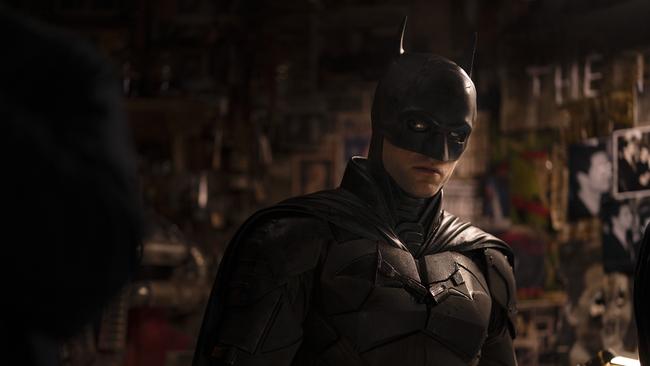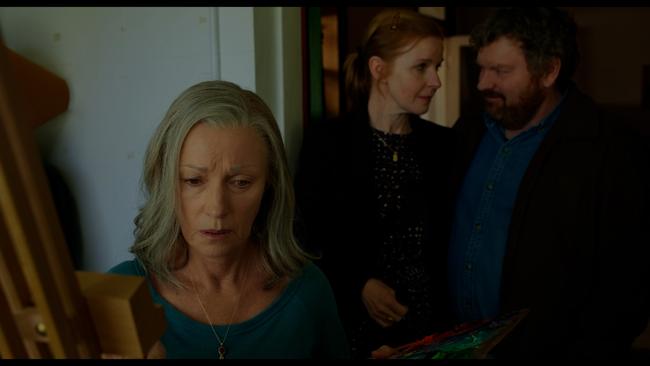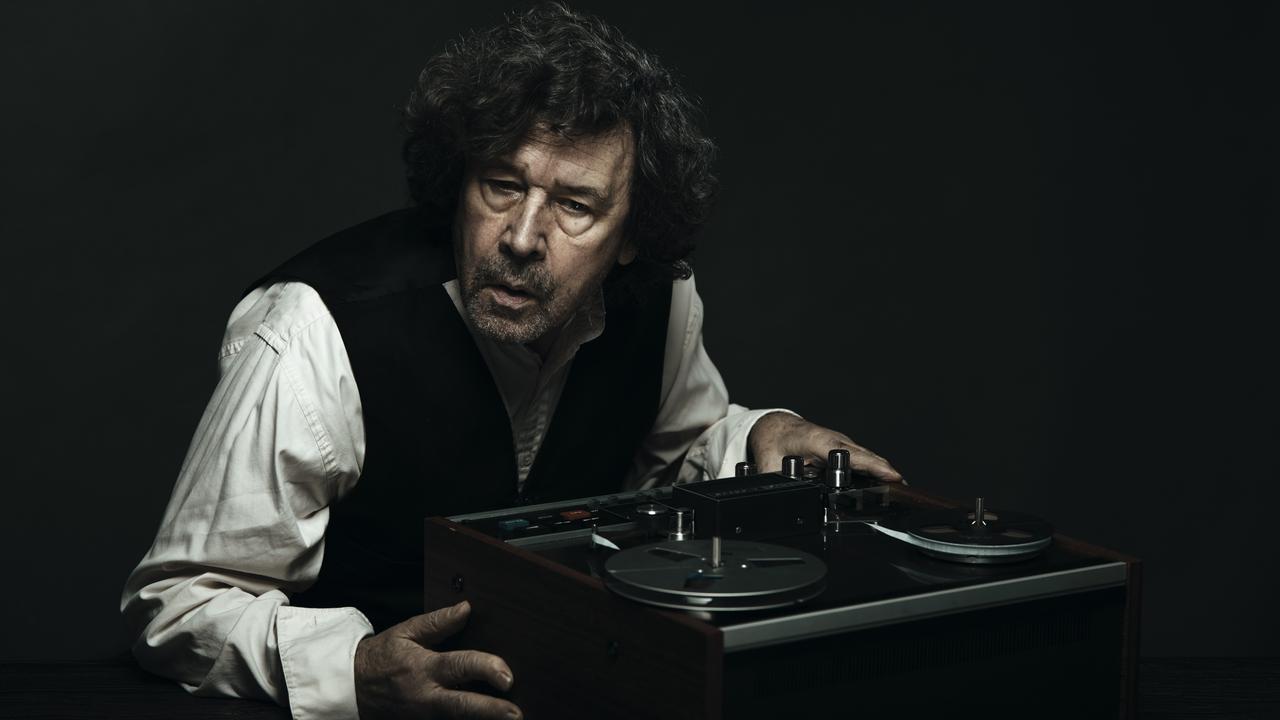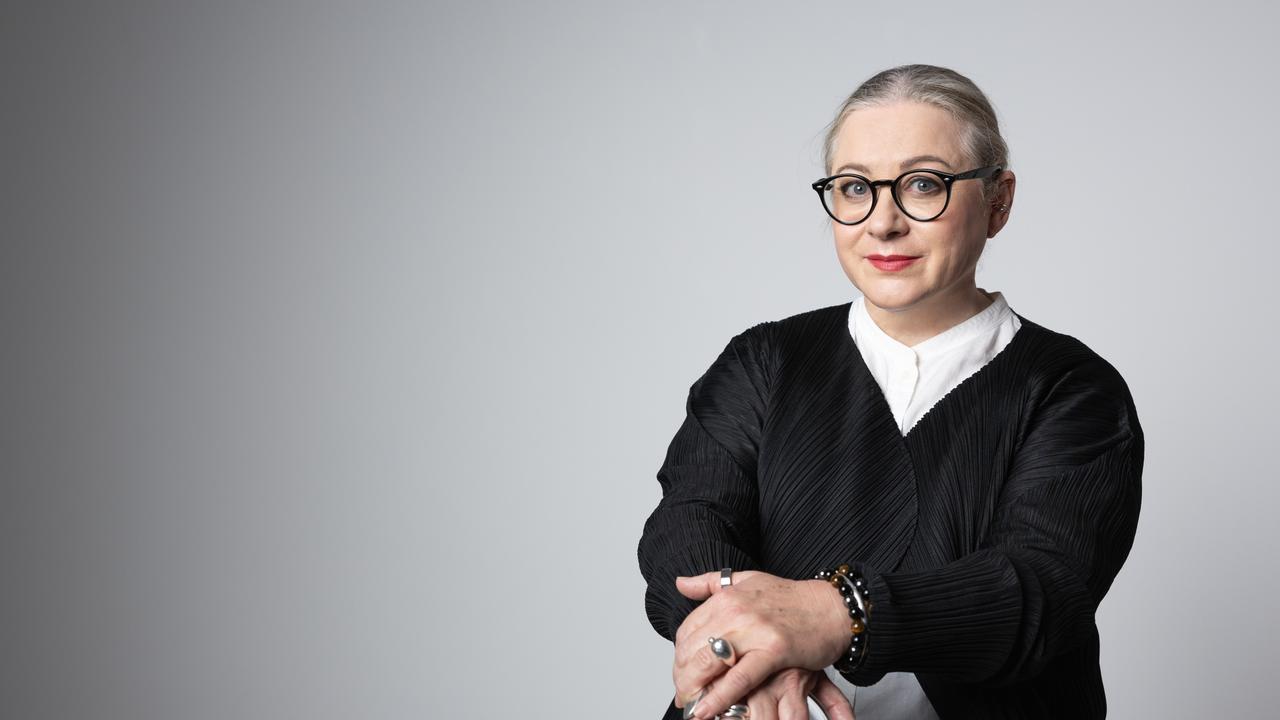Reviews: The Batman and Ruby’s Choice
English actor Robert Pattinson follows in the footsteps of Ben Affleck, Christian Bale, Michael Keaton, George Clooney and others.

The Batman (MA15+)
In cinemas
★★★★
When it comes to elevated powers, The Batman has a rare one: it is not a super hero movie.
Like the best films drawn from comic books, such as Logan, with Hugh Jackman as a past-his-prime Wolverine, and The Joker, for which Joaquin Phoenix won an Oscar, this reboot of the caped crusader franchise has more on its mind than the shifting moods of the God of Thunder or an unjolly green giant.
Director Matt Reeves, who co-wrote the script with novelist Peter Craig, was brought in after a previous Batman, Ben Affleck, pulled out of the project.
They, with a new star, English actor Robert Pattinson, who follows in the footsteps of Affleck, Christian Bale, Michael Keaton, George Clooney, the original Adam West and others, have created a new Batman and he is worth watching.
“I have turned into a nocturnal animal,’’ he says early on. “They think I am hiding in the shadows – but I am the shadows.”
Soon after, we see him emerge from literal shadows of a subway station to take on a gang of skinheads who have cornered an Asian man.
It’s Halloween and their leader laughs at this man in a black cape and black leather mask with pointed ears. “Who the hell are you supposed to be?” He replies, “I am vengeance”, and he bruises the skinheads.
There are two moments that suggest who we are dealing with. First, when he knocks the lead skinhead flat to the ground, he kneels over him and keeps punching. Second, when the gang has been dispersed and only he and the Asian man remain, the latter says, “Please don’t hurt me.”
This is so good. The bat signal is bright in the night sky, yet that is no comfort to anyone. “Fear is a tool,’’ The Batman says. We soon learn that Bruce Wayne is only two years into his career as a crime fighter in Gotham City.
He is considered a freak by police officers and a vigilante by the media. He has one friend in the Gotham City cop shop, lieutenant James Gordon (Jeffrey Wright).
“I wish I could say I am making a difference, but I don’t know,’’ The Batman says. Murder rates have risen, not fallen.
And the first main character we see in this 176-minute film, The Riddler (the ever brilliant Paul Dano), takes this to a new level.
Here the filmmakers do something important: they make The Riddler serious.
This puzzle lover is not a comedian in a bright green leotard (Jim Carrey in Batman Forever) but a sociopathic serial killer. He wears all black and, as one of his online followers points out, a winter combat mask.
There’s online speculation that he’s based on the never-identified Zodiac Killer in California in the 1960s, who has been incorporated into a lot of films, including Dirty Harry.
There are some links. He sends greeting cards to The Batman. He leaves cryptograms in his bloody wake. I think there are also connections to Ted Kaczynski, aka the Unabomber, and to the people who stormed the US Capitol in January 2021. He’s working to a “day of judgment” when the “truth about our city will finally be unmasked”. A scene where he, himself unmasked, talks about his life is an Oscar-worthy performance from Dano.
His victims are not young lovers, like the Zodiac Killer, but people in high office. The film opens with him killing the mayor of Gotham City. His next target is in the police hierarchy and his execution method is a straight nod to Room 101 in George Orwell’s 1984.
This is a story where everything is linked and where everyone has an imperfect past. The Riddler talks about the sins of the father. Even good people, it seems, have dirty laundry.
There are links between The Batman and The Riddler – there’s a superb scene, in which Dano is so good, where they are mirror images – and between government, law enforcement and crime.
The crime lord is Carmine Falcone (John Turturro) and his main muscle is Oz Cobblepot aka The Penguin (an almost unrecognisable Colin Farrell). Falcone has a link to Selina Kyle (rising star Zoe Kravitz), who is not called Catwoman but who does own a lot of cats. And when sexual tension percolates between herself and The Batman, she notes that “a bat and a cat has a nice ring to it”.
This nascent Batman has only a basic bat cave and limited crime fighting tech. There’s a funny scene where he, with the police in pursuit, has to jump off a tall building. And while it takes a while to see the Batmobile, in pursuit of The Penguin, who is behind the wheel of a Maserati, it is worth waiting for.
This movie opens on Halloween, the same holiday that Bruce Wayne’s mother and father were murdered, and runs for a week. A lot of it happens at night and it is raining most of the time. Australian Greig Fraser, favourite to win an Oscar on March 28 for Denis Villeneuve’s Dune, is the cinematographer behind this dark, wet, flinty atmosphere. The music, by Oscar winner Michael Giacchino, adds to the feeling of never-ending confrontation.
There is so much to like about this film. I plan to see it several times, as I did with The Joker. I think there will be more to learn each time. Its weakest spot is the script, which too often slips into comic book cliche.
How does Pattinson stack up as Batman? He’s not at the level of Bale, widely agreed to be the best in the Christopher Nolan films, for which Heath Ledger also won an Oscar as The Joker, but he has made a strong start.
There is a brief scene towards the end, featuring someone I suspect is The Joker, that suggests a sequel. I think the actor is the remarkable Irishman Barry Keoghan.
If so, please send in the clown.
-
Ruby’s Choice (PG)
In cinemas
★★★½
Ruby’s Choice is a quietly powerful Australian drama centred on a 70s-something woman slipping into dementia.
It’s not as bleak as Iris (2001), in which Judi Dench is the writer Iris Murdoch, or Still Alice (2014), for which Julianne Moore won an Oscar, but it is compassionate and moving.
It’s a should-see film for anyone in their latter years, and for their children.
Ruby is played by English actor Jane Seymour, a one-time Bond girl (in Live and Let Die, with Roger Moore). Her accent is explained: Ruby came to Australia as a teen, with her parents and sister.
Seymour was attracted to this Australianfilm, directed by Michael Budd and written by Paul Mahoney, partly due to her friendship with the American singer-songwriter Glen Campbell (1936-2017), who suffered from Alzheimer’s.
She was a producer on Glen Campbell: I’ll Be Me, a 2011 documentary about the Rhinestone Cowboy’s Goodbye Tour.
And to mark the release of Ruby’s Choice, she has become a global ambassador for the Australian charity Dementia Foundation for Spark of Life.
We first meet Ruby at her home in suburban Australia. She lives alone but it soon becomes clear she thinks her husband Frank, dead for five years, is away on a business trip.
She’s full of life, dresses with panache and drives a yellow MG convertible, which I suspect is a humorous nod to the actor’s 007 moment.
Yet there are signs something is amiss. She confuses her microwave with her computer; she goes to the cinema each Tuesday and sees the same film, Red Dog, each time.
“For her it is new,” the sympathetic ticket seller tells a puzzled new employee.
It’s when she puts three lamb chops in a fry pan and forgets about them that her daughter Sharon (Jacqueline McKenzie) accepts that all is not well.
Ruby moves in with Sharon, her husband Doug (Stephen Hunter) and their teen daughter Tash (Coco Jack Gilles, a young actor to watch). They are soon joined by Doug’s brother Ken (Brendan Donoghue), who has separated from his wife, and his teen son Ned (Rory Potter).
This is a working class family struggling to make ends meet. They have to deal with financial difficulties and government bureaucracy.
“Looks like you’ve got to be practically dead before you get any assistance,’’ a frustrated Sharon notes.
“She looked after me my entire life. It’s my turn to look after her and I don’t know how to do it.”
She is caught squarely in the middle. She worries that dementia may be hereditary and if so what this would mean for her daughter.
When Tash questions her parents about going along with Ruby’s belief that her husband is still alive, they say sometimes white lies are needed. This becomes important as Tash, who grows close to Ruby, investigates the family history. There are white lies and then there are just lies.
And in the middle of all of this is Ruby.
It should be her choice, as the title suggests. This is a well-directed, well-written, well-acted film, with Seymour showing her class. She brings a tear to the eye in a scene where she forgets where the bathroom is.
At one point she and Tash go to the cemetery. Ruby puts flowers at the graves of her parents and her sister.
When Tash says she’s sorry that her grandmother’s loved ones are in this place, Ruby laughs. “At least when you come to visit them,’’ she says, “they’re all in the one place.”
It is a funny moment. Then Tash moves a bit further along and sees the grave of her grandfather, the loving husband Ruby thinks is on a business trip.




